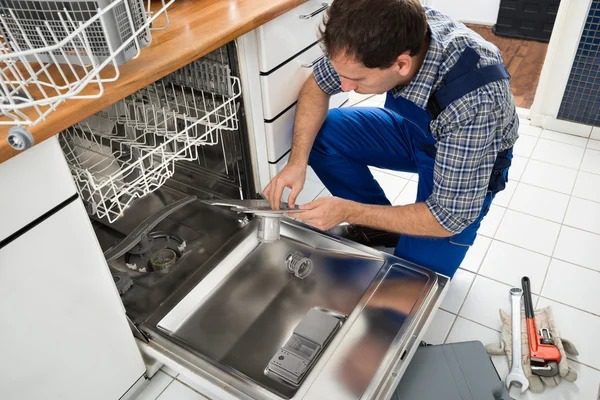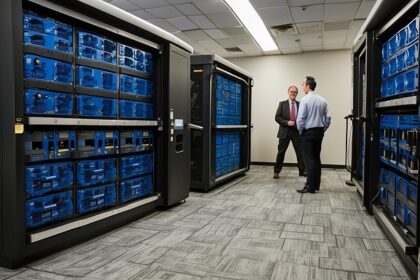Proper drainage is necessary for household appliances for their proper function. It enhances their lifespan due to the removal of waste material, wastewater and excessive moisture from their draining system. The drainage issues may cause reduced performance, water damage in the household stuff and inconvenience for the homeowners. In this guide, we explore the way how you can troubleshoot the drainage issues of your home appliances by yourself, highlighting the common problems and their appropriate practical solutions.
The homeowners can maintain the optimal performance of their appliances’ common issues and save the money and time that may be spent on costly repairs. We have provided separate troubleshooting instructions for each type of appliance. Whether you are stuck with the drainage issue of the dishwasher, refrigerator or washing machine, we have penned down the practical solution to tackle the drainage problems.
Once the problem has been successfully resolved, your application will be restored to its optimal performance. Let’s explore the appliance’s drainage problem and restore its issues.
How To Fix A Dishwasher That Won’t Drain
If your dishwasher is not draining properly, you have to follow the given steps for quick solutions:
- Turn off Power: When you start the troubleshooting process, must ensure that your dishwasher is disconnected from the electric power source to prevent electric shock
- Check Drain Hose: Properly analyze the drain hose for any bends, blockage or kinks. Remove any debris that is obstructing the hose or straighten the kinks. Once all the debris and garbage are removed from it, the hose will work properly.
- Clean Drain Filter & Basket: The drain filter and baskets are connected at the bottom side of the dishwasher. Check them and remove all food particles, debris and grease buildup. After that, clean it by using a brush or cloth to remove the remaining stubborn residue.
- Check The Air Gap: The draining issue may happen if the air gap is filled with clogs. Remove the cap of the air gap and flush it with water to remove all the debris from it.
- Analyze The Drain Pump: The drain pump is used to pump the water out of the dishwasher. If the pump is filled with debris or food particles, the water will not come out properly causing drainage issues.
- Check Valve: The check valve is responsible for not flowing the water back to the dishwasher after draining. Test it gently for blockage or damage. If the valve is not working accurately, replace it immediately.
- Cleaning Cycle: Some dishwashers use the cleaning cycle to remove all food blockage or debris. Run the cleaning cycle and remove all blockage from it.
- Check The Garbage Disposal: If your dishwasher is integrated with the garbage disposal, must ensure that it is clear of any garbage. If you find any kind of blockage, run the garbage disposal to remove it.
- Plumbing Issues: There is also a possible plumbing or sink drain line issue with your dishwasher. If drain lines are filled with clog or blockage, clean them gently.
- Call The Qualified Technician: If the problem remains safe after checking the above all things, your dishwasher may have a technical problem. You should consult with a professional Appliance Repair Miami for troubleshooting and fixing.
How To Fix A Washing Machine That Won’t Drain
If the washing machine fails to drain, it may happen due to various reasons like simple clogs or complex mechanical failures. Here is the detail on how you can fix the washing machine draining issue.
- Safety Precautions: To deal with any kind of troubleshooting, safe precautions are necessary. You should turn off the washing machine and unplug it and switch from the power source to remain safe from electrical hazards.
- Test The Drain Hose: Check the drain hose from the backside of the washing machine to ensure it is not bends, twists or kinks that disturb the flow of water. Straight the hose if you find any kind of bend, kinks or twists
- Clean The Drain Pump Filter: The pump filter is integrated at the front and bottom sides of the machine. Unscrew the filter and remove all debris and lint from it to prevent blockage. You should also clean the filter regularly to prevent drainage issues to maintain the washing machine’s efficiency.
- Check The Drain Pump: The drain pump is used to remove all the water from the washing machine. If the pump is clogged, it ruins the draining system. Properly inspect the pump and check whether it is giving an unusual sound or feels stiff, and replace it immediately.
- Drain Pump Motor: Test the drain pump motor with the help of the multimeter. Replace the motor if the multimeter is not showing continuity.
- Drain Hose Connection: Check the connection of the drain hose whether it is accurately connected to the washing machine and drain outlet. Resolve the problem if the hose is connected loosely or improperly. A tightened hose does not cause a drainage problem
- Check the Lid Switch: A faulty lid switch causes the draining problem. Uses the multimeter and inspects it properly. If you find any kind of fault, replace it promptly.
- Drain Pipe: Properly analyze the drain pipe whether it is suffering from blockage or cleaning. You can use the plumber’s snake or drain auger to clean the pipe.
- Take Test Cycle: After applying all the above techniques, run a test cycle and check whether it is draining properly or not. Monitor it critically for its confirmation.
- Call a Professional: If the problem remains the same, call the professional for its entire troubleshooting. Technical problems can be solved by a technical professional. You can contact the Appliance Repair Garden isles to get assistance from qualified technicians.
How To Fix A Refrigerator That Won’t Drain
- Identify & Clean The Drain Hole Location: The drain hole in the refrigerator is situated at the bottom allowing the water to flow toward the tray integrated underneath the device. Clean this draining hole to remove blockage in the flow of water with the help of a pipe cleaner or flexible brush.
- Inspect the Drain Pan & Drain Tube: Check the drain pan from underneath the refrigerator and ensure that it does not crack or damage. Also, inspect the drain hole so that the water carries from the freezer compartment to the drain pan. Remove the blockage with a pipe cleaner or a flexible brush to remove debris or any kind of blockage.
- Refrigerator Must Be Properly Aligned: Yor refrigerator must be properly aligned and it does not tilt otherwise it affect the draining system.
- Check Ice Buildup: Sometimes, the drain hole blocks by building up too much ice in the freezer compartment. It also affects the draining system. Melt the ice to get rid of this problem.
- Evaporator Fan: Evaporator fans remove the heat from the device and keep the inner environment cool. If the fan is not working properly, it can cause a draining issue.
Conclusion
Troubleshooting the appliances is necessary to maintain the efficiency of the device for long time. Whether it is a dishwasher, washing machine or refrigerator, it is necessary to understand the drainage issue and resolve it by following the manufacturer’s instructions. The homeowners must know how to deal with the blockage issue or malfunctioning component of the device.
They have to properly care for their devices through regular maintenance, cleaning filters, testing pumps and inspecting hoses to get the optimal performance. By applying the above provide techniques, homeowners can effectively troubleshoot their appliances problems and solve the drainage issue easily to increase the lifespan of their devices.








